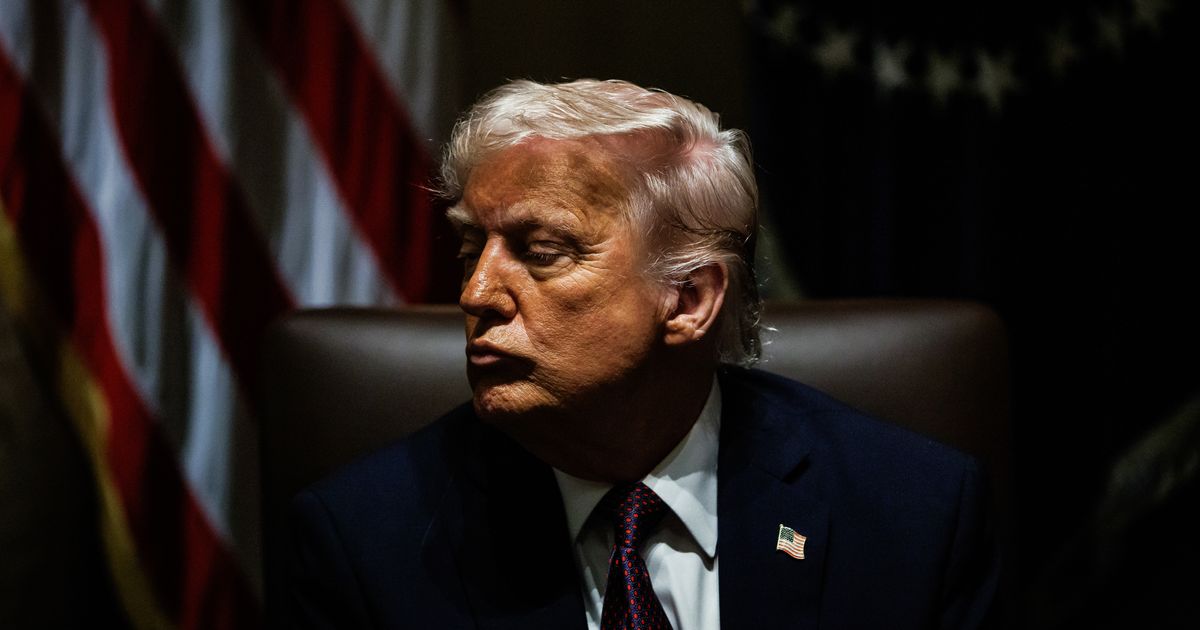
Photo: Samuel Corum/Bloomberg/Getty Images
For a brief, shimmering moment in the aftermath of the 2024 election, almost everything seemed possible for Donald Trump.
Unlike 2016, Trump had won the popular vote, and Americans, against all odds, had developed a warmer view of him. MAGA was ascendant. It was plausible to perceive Trump’s victory as a harbinger of a broader realignment: Among Black, Latino, and Asian voters, Trump had made tangible gains, and those under 30 moved decisively toward the former and future president relative to 2020. The social-justice or woke era was in eclipse, and there was no shortage of ruminations on the rightward shift of the youth and the inability of liberals to matter to this new counterculture.
Conservative intellectuals like Oren Cass and a number of right-populist politicians, including Josh Hawley and J.D. Vance, heralded a new Republican Party that could, if savvy and disciplined enough, triangulate or even break the American left. These MAGA leaders expressed support for organized labor and offered stinging critiques of laissez-faire capitalism — it’s easy to forget that portions of Vance’s speech at the Republican National Convention sounded like they were cribbed from Bernie Sanders — while maintaining a sense of cultural conservatism. They were anti-immigrant, staunchly patriotic, and skeptical of the Reaganite wing of the GOP that had, over the decades, alienated the working class. Trump appeared to intuitively grasp this, beating the Biden administration to the site of a toxic train derailment in Ohio and later, upon winning again, nominating a Labor secretary who genuinely embraced labor rights.
If Trump had rhetorically wrenched his party left on economics, his actual presidency has proved that the realignment chatter was at best premature and at worst foolhardy. Trump and the Republican Congress have already squandered the polling advantages they enjoyed at the start of the year, rapidly bleeding the support of young people and failing to cement the gains the president had made with nonwhites. Trump’s overall approval rating has plunged, and unlike even Biden’s decline — driven by his advanced age and chaotic withdrawal from Afghanistan — it has been almost entirely self-inflicted and within his control.
Consider the state of the nation on the day Trump took office: Inflation was beginning to cool, the economy was expanding, and even border crossings were falling. Americans were largely supportive of Trump’s call to tighten the borders further and were open to how he might combat inflation. The tariff regime of his first term was popular enough, and some of it, like the taxes slapped on China, were embraced by the Biden administration. Trump had promised, as a candidate, to not blast apart the social safety net, and Americans believed him. He had political capital to spend down — far more, certainly, than he did at the start of 2017.
Trump has had a consequential presidency, thrilling enough if you are a particular kind of person — one who is not actually well-represented in the American electorate. Nativists and outright racists have much to delight over, and followers of Stephen Miller are reaching their own dark nirvana. Trump has dramatically increased the reach of ICE, attempted to revoke birthright citizenship, and made immigration to the United States inordinately more challenging. Little of this is broadly celebrated, and the most American voters, independents especially, desired out of a second Trump term was a curtailment of mass illegal immigration. Legal immigration is plenty popular, and there’s enough fresh polling to suggest that Trump’s hypermilitarized ICE is not fulfilling any broader mandates. Thanks to Trump, Americans are becoming gradually more pro-immigrant again, perhaps recalling what nativist cruelty looks like in practice.
Trump’s economic agenda is another deep, lasting strike against the realignment. Tariffs, in theory, belong to the protectionist, populist cause Trump championed, but they mean little if they aren’t paired with any greater federally funded industrial policy. Unlike Biden, Trump has not attempted to directly boost domestic manufacturing or America’s withering supply chains, especially as China looms as the world’s greatest 21st-century industrial superpower. In April, Trump temporarily tanked the stock market, and while markets have recovered and are now at new highs, Americans are much more wary of Trump’s stewardship of the economy. Trade wars aren’t especially exciting to voters.
More crucial, though, is the One Big Beautiful Act and the enormous social safety-net cuts, particularly to Medicaid, that will be felt in the coming years. Beyond tax cuts, there’s little for Republicans to easily campaign on, and the reduced funding to rural hospitals and clinics will make for great Democratic campaign fodder next year. The reconciliation package, largely, was a hodgepodge of orthodox Republican fiscal policy that never found much support from voters after the 1990s. This was Trump’s great insight, after all — he’d run against pure supply-side economics in 2016, swerving away from Mitt Romney–style conservatism. But campaigning and governing are entirely different matters, and Trump has shown he’s willing to bow to the traditionalists in his party when it comes to bills that arrive on his desk for a signature.
The other populist Republicans wilted, too. Hawley vowed to not vote for a package that slashed Medicaid and then did it anyway. Now he meekly wants to reverse those cuts, but the damage has been done. Vance, as Trump’s vice-president, must cheerlead whatever his boss does, especially with a fight for the 2028 nomination on the horizon. The Jeffrey Epstein saga, meanwhile, threatens to overshadow the lawmaking and cause great anguish for MAGA, who are caught between obeying their beloved leader (who wants all Epstein discourse to cease) and chasing Epstein threads in perpetuity. Epstein, the late sex criminal, bedevils them because Trump is no less implicated than any Democrats, and answers will prove elusive for all time.
The more banal fallout of this all is that America remains a nation split between red and blue, with neither party gaining a decisive advantage. Republicans cannot triangulate or realign the electorate in such a manner to doom the Democrats to irrelevancy. Democrats can’t seem to excite voters enough to revive the promise of an Obama-esque landslide. Democrats have the edge to flip the House next year, while Republicans should be the favorites to retain Senate control. The 2028 race is probably going to be a closely divided slog, no matter whom the major parties nominate. This is what we are, and what we are going to be.

